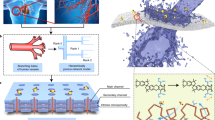Abstract
THE energy crisis means that a petroleum substitute is urgently needed and a promising candidate is nuclear energy. Uranium, however, like petroleum, is distributed in small limited areas. These circumstances could be dramatically improved if uranium in seawater were to be utilised as a resource. Although its concentration is extremely low (3.3 parts per 109), the total amount is huge, calculated at 4–4.5 × 109 tons. We have recently synthesised a macrocyclic hexaketone (I) which is a very strong host of uranyl (UO2+2) ion1. Its noteworthy characteristics are: (1) six oxygen atoms can be directed towards the inside of the ring, if necessary, to form hexadentate coordination in near coplanarity which corresponds to the crystalline structure of various uranyl salts2,3. (2) β-Diketone can easily be dissociated in seawater (pKa is 8.95 for acetylacetone) to form a strong ligand, ketoenolate anion4. (3) The bound uranyl ion is readily liberated by the treatment with dilute aqueous acid. Here we report the successful extraction of uranyl ion directly from seawater using polymer-bound macrocyclic hexaketone.
This is a preview of subscription content, access via your institution
Access options
Subscribe to this journal
Receive 51 print issues and online access
$199.00 per year
only $3.90 per issue
Buy this article
- Purchase on Springer Link
- Instant access to full article PDF
Prices may be subject to local taxes which are calculated during checkout
Similar content being viewed by others
References
Tabushi, I., Kobuke, Y. & Nishiya, T. Tetrahedron Lett. (in the press).
Fankuchen, I. Z. Krystallogr. 91, 473–479 (1935).
Zachariasen, W. H. Acta crystallogr. 1, 277–281, 281–285 (1948).
Mehrotra, R. C., Bohra, R. & Gaur, D. P. in Metal β-Diketones and Allied Derivatives (Academic, New York, 1978).
Onishi, H. & Toita, Y. Bunseki Kagaku 14, 1141–1146 (1965).
Davies, R. V., Kennedy, J., McIllroy, R. W., Spence, R. & Hill, K. M. Nature 203, 1110–1115 (1964).
Harrington, F. E. et al. Oak Ridge Nat. lab., ORNLTM-4757, 1–77 (1974).
Author information
Authors and Affiliations
Rights and permissions
About this article
Cite this article
TABUSHI, I., KOBUKE, Y. & NISHIYA, T. Extraction of uranium from seawater by polymer-bound macrocyclic hexaketone. Nature 280, 665–666 (1979). https://doi.org/10.1038/280665a0
Received:
Accepted:
Issue Date:
DOI: https://doi.org/10.1038/280665a0
This article is cited by
-
Efficient removal of U(VI) from aqueous solution using poly(amidoxime-hydroxamic acid) functionalized graphene oxide
Environmental Science and Pollution Research (2024)
-
Functional polymer brushes for highly efficient extraction of uranium from seawater
Journal of Materials Science (2019)
-
Adsorption of U(VI) from aqueous solution by magnetic core–dual shell Fe3O4@PDA@TiO2
Journal of Radioanalytical and Nuclear Chemistry (2018)
-
Adsorption of uranium(VI) on mesoporous silica microspheres supported titanium hydroxide hybrid material
Journal of Radioanalytical and Nuclear Chemistry (2018)
-
HDEHP-CMPO/SiO2-P: a promising solid-phase extractant for uranium recovery from different acidic media
Journal of Radioanalytical and Nuclear Chemistry (2018)
Comments
By submitting a comment you agree to abide by our Terms and Community Guidelines. If you find something abusive or that does not comply with our terms or guidelines please flag it as inappropriate.



